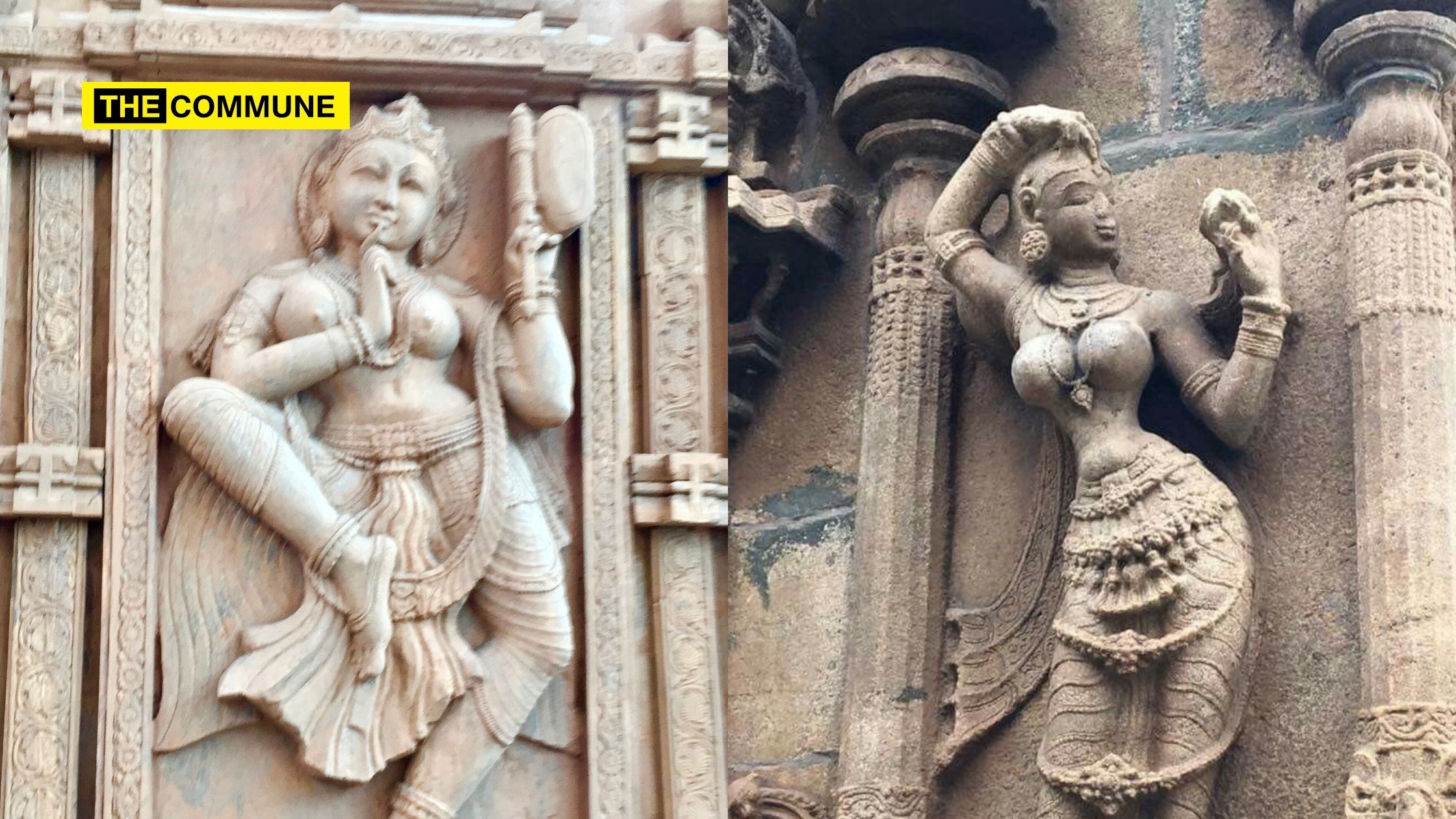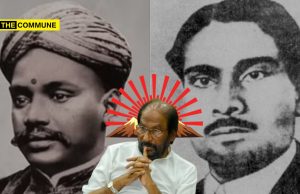
Recently, a Telugu movie called Shyam Singha Roy spoke about an ancient traditional practice of temple worship. For the unversed, the movie portrayed West Bengal in 1969, and the ill effects of the Devadasi system, which was still not fully abolished back then. While the movie was commended for speaking about the flaws of the system, some aspects of the system were portrayed incorrectly, as the movie only showcased how the system became eventually. The movie failed to focus on what the system really was. For example, the movie shows the Devadasi clan bound inside the temple, not being able to step out at all. However, this portrayal is false, as even in Mrcchakatika (Sanskrit play by Shudraka) times, Devadasis were recorded as women with free movement.
While this was recent, let us have a look at the Devadasi system. Was it only a flawed system like the film portrayed? Why was it in practice for so many years in India?
According to a book called ‘Varalatril Devadasigal’ written by CS Murugesan, the Devadasi system has been mentioned in the Padma Purana itself. According to the book, the Devadasis are the wives of Devas, who were molested by the Asuras during a war between the Devas and the Asuras. Indra, the chief of Devas, then decided to send these wives of Devas to Earth, to indulge in service to God and return to the Devaloka after they have regained their purity. So, according to the Purana, Devadasis are wives of Devas, who had to take birth on Earth, just for serving God.
The word ‘Devadasi’ literally means ‘Servant of God’ largely referring to women. The Devadasis were female artists, who, at a very young age, were dedicated to the temple, for worship and service of the deity, for the rest of their lives. Through a ceremony called Pottukattu, these Devadasi women were dedicated to the temple. This ceremony is similar to the traditional marriage ceremony, except that these women were considered ‘wives of God’. During the 6th to the 13th Century CE, the Devadasis had a very high rank in society. They were experts in various art forms including dance and music, as performing arts were a part of Temple worship, during that period.
“The Devadasis would have essentially lived in the Agraharams or other housing facilities near the temple. There is no direct historical evidence to prove that the members of this community were priests in Saivaite or Vaishnavite temples. But, you can predominantly see historical evidence that the Devadasis were serving at Shakta temples (temples of the Shakthi). They were mostly found in places with a lot of Kali temples, like West Bengal. So, the Devadasis were associated with temples of the Shakthi (Shakta temples),” said Epigraphist and Archaeologist Kalvettu S Ramachandran.
Today, the Devadasis are largely associated with Temple prostitution. This is because the glory of the Devadasis began to wane with the Mughal and the British rule. Following their successful capture of Nothern India, the Mughals started destroying Hindu temples, in an attempt to spread Islam. This rendered the Devadasis institution-less and forced them to fend for themselves. With the destruction of temples, the Devadasis lost their patronage, and there began their exploitation. Devadasis, who once only performed as a means of worship to God, were then forced to perform for entertainment at weddings and other occasions. At that point, Dance was highly associated with prostitution, leading to the Devadasis’ exploitation. Further, the British rule helped spread this misuse throughout the subcontinent.
Many theories suggest that the Devadasi system was created for the exploitation of women. These theories attack Hinduism and the Hindu practice for such a system. However, it is important to note that the meaning of the Devadasi system changed only after the Mughal and British influences.
When asked whether early references to the Devadasi system indicated its existence for the misuse of women, Ramachandran said, “The word Mannequin used to denote dolls comes from the Dutch root ‘Manikin’. This might have come from the Tamil word ‘Manickam’ that we use today. However, this Manickam does not refer to the gem or ruby as understood today. It refers to a position or designation that the Devadasis had in their practice. The ‘Maan’ in Manickam refers to a person who assisted in Pujas conducted in temples. This is found in many inscriptions. So, the term ‘Maan’ is a posting that might have been an apprenticeship in temples. While this ‘Maan’ refers to male apprentices, the term ‘Manickam’ refers to the female ones, which became an important posting in the Devadasi tradition. So they were considered second to Archakas (priests) or could have been Archakas themselves as well. So, the origin of the Devadasi system had women performing arts as a tradition of worship. It was in no way associated with courtesanship or prostitution.”
In 1934, the then British government brought in the Bombay Devadasi Protection Act. The act was to protect Devadasis and to prevent the dedication of women to Hindu deities, idols, objects of worship and religious institutions in the State of Bombay. This was then adapted in Madras as the Madras Devadasis (Prevention of Dedication) Act, 1947. This act gave Devadasi women the right to marry and prohibited the dedication of Hindu girls to Temples. Similar acts were further adapted in Karnataka and Andhra Pradesh, with Maharashtra being the latest. As per the National Commission for Women’s 2015 data, there are still at least 44,000 active Devadasis in India. The NCW also noted that this number could be as high as 2,50,000. The same NCW data also says that they are predominantly found in Karnataka, followed by Andhra Pradesh and Maharashtra.
Talking about the Bombay Act, Srividhya P, a Madras High Court Advocate said, “Bombay Devadasi Act is one of the stepping stones towards the abolishment of the practice of Devadasis and considered the practice as illegal. In my point of view, this act is so crucial in the life of women. Today Devadasis are exploited sexually and only very few victims come to report the harassment they are facing. The second point is that the girls have been sent as Devadasis during their minor age itself which means their consent was also not there. Of course, I don’t say it’s wrong one has so much dedication toward god until there are not under any coercion or influence.” She also added that the most latest amendments to the Act were made in the year 1960 and that the Act is still in use to protect Devadasis who are vulnerable to exploitation.
It goes without saying that the Act has been highly beneficial in ensuring that the Devadasis of the modern age are safeguarded from how the system is being misused today. However, the Act was brought only in the British rule, that too in the 20th Century, towards the fag end of their rule. This clearly suggests that the British and the Mughals have played a fundamental role in redefining the system. As given by the traditional Hindu practice, this system seems like one that was created to empower women, and also involve them in the procedures of the temple. However, over the years, the narrative has changed that the system itself is flawed and that it was a system meant for the misuse of women. Movies like Shyam Singha Roy, which have portrayed the system in its incomplete manner, are adding more fuel to the fire.
Click here to subscribe to The Commune on Telegram and get the best stories of the day delivered to you personally.




